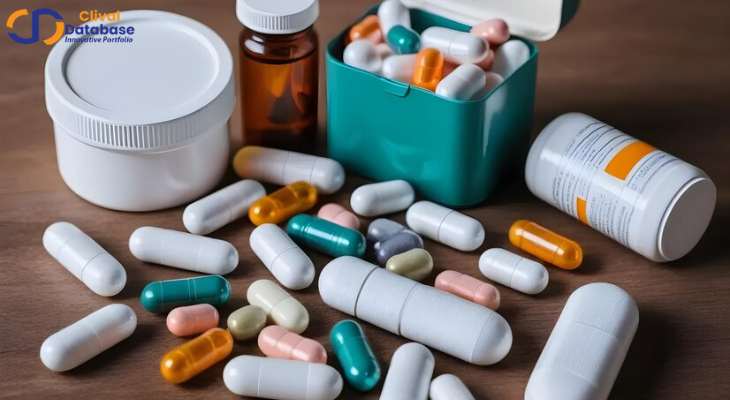Enhancing Patient Safety: The Role of Clinical Trials and Drug Development
Introduction
Patient safety is always a big issue of concern especially in clinical trials and during the drug development. Given the increasing speed of developing new therapies, ensuring those therapies are safe and effective prior to be made public is imperative for the preservation of patient safety and endorsement of innovative treatments. This blog post focuses on the vital role of clinical trials in improving patient safety including the procedures followed to ensure safer drug development and advancements towards making clinical trials safer.
Understanding Clinical Trials
Clinical trials are planned and coordinated scientific investigations for determining the relative safety, effectiveness and acceptable use of new drugs and therapies. Phase of clinical trials are subdivided into phases which has separate objectives.
Phases of Clinical Trials
Clinical trials are processed in many phases, each having specific purpose about a new treatment's safety and efficacy:
- Phase I: This first phase is centered around safety. A few healthy volunteers take the drug in order to evaluate its safety, to find out the dose range that do not harm a human body, to detect adverse effects and to see how the innovative drug is metabolized.
- Phase II: In phase II, the drug is administered to a larger number of volunteers suffering from the disease the innovative molecule is developed to cure. It is used in an attempt to establish the correct dosage and interval for the particular treatment.
- Phase III: In this phase, much bigger patient group is involved and is designed to ensure the effectiveness of the drug, adverse effects and ideal treatment comparisons. It offers a most convincing data on the drug safety and efficacy as well as collecting data for getting approval from the regulating authority.
- Phase IV: It is also called post-marketing surveillance and takes place after the drug is approved and has been released onto the market. It continues assessment of the drug use among the population and the detection of the long-term implications of the drug.
Enhancing Patient Safety through Rigorous Protocols
1. Ethical Standards and Informed Consent
Ever since clinical trials sought to be standardized, one of the most important principles has been the rights and welfare of trial volunteers. To protect the participants involved in a trial, regulatory authorities like the FDA and EMA have set regulatory measures so that the participants will be fully informed about the benefits and risks involved in being part of trial. An important procedure is the consent when participants really know all the circumstances to be involved.
2. Risk Management
The evaluation of risks is the critical element in clinical trials processes. Such measures entail constant surveillance of adverse events and safety evaluation of the received information as well as applying safety measures. Information acquired from these are used to assess the stakes and merits of the new molecule in order to reach conclusions on its development and release. This includes:
- Monitoring Adverse Events: Volunteers are constantly tested in clinical trials to check side effects. Adverse events or serious reactions, if observed must be communicated to relevant authorities immediately.
- Data Safety Monitoring Boards (DSMBs): The trial’s data is reviewed periodically by the independent committees to determine participants’ safety. In addition, it is within their discretion to stop a trial in conditions where people’s lives are endangered or their benefits are overtaken by risks.
3. Regulatory Oversight
To a certain degree, regulatory is equally important in protection of patient interests since all clinical trial protocols, data and results have to be scrutinized by the agency before drug marketing approval is granted.
In India, clinical trial process is monitored by the FDA of U.S, EMA of Europe and CDSCO (India) in order to achieve safety of patients. They have also laid down strict protocols on how trials should be conducted, ethics, informed consent and the Good clinical practices (GCP).
The Role of Technology in Enhancing Safety
New technologies are making clinical trials innovative and effective in relation to drug discovery and giving a boost to effective patient protection. Health information technologies are promoting patient safety in clinical research. Electronic health records (EHRs), wearables, and remote monitoring tools will facilitate continuous real time data collection and monitoring resulting in quicker detection of adverse events. Machine learning has manifested its utilization in risk profiling in connection to accumulating data, predicting trial risk, and trial design. Key technological innovations include:
-
Real-Time Data Monitoring
Smart gadgets and health applications help track participants’ health information in real-time so that the investigator can intervene at once if there is something suspicious. An important feature of electronic surveillance is that it can capture signals of adverse events prior to traditional methods of reporting.
-
Artificial Intelligence and Machine Learning
Artificial intelligence and its subset, machine learning, are being applied more frequently to evaluate huge sets of data from clinical trials. These technologies can give a hint of the safety risks that can occur in future trials if certain patterns are used resulting in preventive measures being taken.
-
Telemedicine
Telemedicine has emerged to be an essential component especially during the outbreak of COVID 19. It allows for remote check-up and consultations, and it can be of great value in the difficult circumstances.
Continuous Improvement and Future Directions
-
Ongoing Training and Education
To further improve patient safety, it is imperative for all clinical trial professionals to update themselves and others through training. This way they acquire updates that help them keep abreast with the latest legal and ethical requirements and practices.
-
Patient-Centric Approaches
Patient involvement is the best way to enhance safety in trial designs. Patient involvement can also be applied in the formulation of care plan because experiencing as well as the patients’ preferred ways of being treated would easily be explored when the patient is involved in a discussion about the clinical trial protocols.
International Collaboration
The regulatory bodies, the drug manufacturing industries and investigators must develop strong cooperation globally in order to achieve significant harmonization in patient safety. The exchange of safety data and of experiences by clinicians involved in clinical trials from different parts of the world will contribute to making clinical trials safer globally.
Conclusion
Improving the patient safety is core interest in clinical trials and drug development. To protect and ensure sustainable development, using professional protocols, ethical norms and by introducing high technologies, the pharmaceutical business is actively working for creating new therapies that are relevant not only effective for patients but safe as well. We can make important progress in medicine and, at the same time, protect the patient’s rights and interests.
Frequently Asked Questions

Optimize Your trial insights with Clival Database.
Are you exhausted from the uncertainty of trial insights pricing? Clival Database ensures the clarity in the midst of the global scenario for clinical trials to you.Clival Database is one of the best databases that offers an outstanding number of clinical trial data in terms of 50,000+ molecules and from primary regulatory markets as well as new entrants like Indian and Chinese markets.
Elevate your trial success rate with the cutting-edge insights from Clival database.
Check it out today and make more informed sourcing decisions! Learn More!







